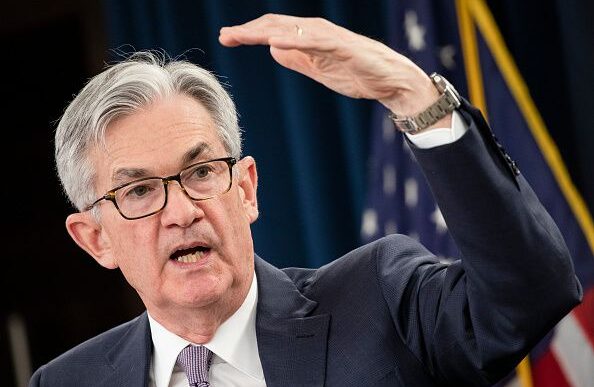Bitcoin, the world’s most famous cryptocurrency, has often been described as digital gold, a hedge against inflation, and a volatile asset all in one. While 2025 is projected by many analysts to be a bullish year for Bitcoin—possibly reaching new all-time highs—there remains a looming question: what if Bitcoin crashes before the end of 2025? The consequences could ripple far beyond crypto holders, shaking global markets, investor psychology, and the future of digital assets.
Understanding Bitcoin’s Volatility
Bitcoin’s volatility is legendary. Even minor regulatory announcements, technological upgrades, or macroeconomic shifts can trigger double-digit percentage swings in a single day. Factors that could precipitate a 2025 crash include:
- Regulatory Clampdowns – Governments like the U.S., China, or the EU could impose stricter rules on crypto trading, mining, or taxation.
- Technological Failures – Network bugs, critical vulnerabilities, or quantum computing breakthroughs could threaten blockchain integrity.
- Market Liquidity Shocks – Large sell-offs by institutional investors or Bitcoin ETFs could trigger cascading panic among retail traders.
- Macroeconomic Shifts – Rising interest rates, economic recessions, or sudden shifts in global liquidity could make risk assets, including Bitcoin, less attractive.
Even if Bitcoin’s fundamentals remain intact, investor psychology alone can trigger rapid declines, as history has shown with crashes in 2017 and 2021.
Immediate Consequences of a Crash
A sharp decline in Bitcoin’s price—say, 40% or more—would have cascading effects:
- Retail Investors Hit Hard – Millions of small holders, particularly in emerging markets, could lose significant wealth, potentially reducing consumer spending.
- Institutional Losses – Hedge funds, family offices, and even banks holding Bitcoin could face balance sheet stress, leading to margin calls or forced liquidation.
- Crypto Ecosystem Shock – Altcoins often follow Bitcoin’s trend, meaning Ethereum, Solana, and other tokens could collapse in tandem. Crypto lending platforms could face liquidity crises, threatening further contagion.
- ETF and Futures Market Turmoil – Bitcoin ETFs and derivatives could trigger forced selling across multiple asset classes, affecting broader financial markets.
Historically, Bitcoin crashes have triggered short-term panic but long-term innovation—from the 2018 bear market to 2022’s crypto winter, the ecosystem often emerges leaner and more resilient.
Broader Economic and Market Implications
Bitcoin’s influence is no longer confined to cryptocurrency enthusiasts:
- Tech Stocks – Companies heavily invested in blockchain or crypto services may see stock volatility spill over.
- Investor Sentiment – A Bitcoin crash could dampen appetite for risk assets globally, potentially pressuring equities, commodities, and emerging market currencies.
- Monetary Innovation – Central banks observing crypto’s rise might accelerate digital currency initiatives, viewing Bitcoin’s failure as an opportunity to introduce safer, state-backed alternatives.
Ironically, a crash could legitimize Bitcoin for some. Those who buy during the dip might see stronger future gains, reinforcing the “buy the dip” culture in crypto.
Psychological and Cultural Impact
Bitcoin is not just an asset—it is a social and cultural phenomenon. A crash could affect:
- Trust in Decentralized Finance (DeFi) – Investors may become wary of protocols promising yield or liquidity.
- Public Perception of Cryptocurrency – Media coverage of massive losses could scare off potential new investors for years.
- Investor Behavior Patterns – Fear could drive short-term speculation and long-term caution, shaping market dynamics for the next crypto cycle.
Could a Crash Be Healthy?
Counterintuitively, experts argue that a crash before the end of 2025 could stabilize the crypto market in the long run:
- Weeding Out Speculation – Over-leveraged positions and unsustainable projects would exit, leaving a more resilient ecosystem.
- Increasing Regulatory Clarity – Governments may use the crash as a catalyst to create clear frameworks for investors and companies.
- Driving Technological Innovation – Developers may prioritize security, scalability, and transparency to restore trust.
In other words, while painful in the short term, a crash could pave the way for a stronger, more sustainable crypto market by 2026.
Preparing for the Possibility
Investors and market watchers can mitigate risks by:
- Diversifying Portfolios – Avoid concentrating wealth in a single asset, even Bitcoin.
- Setting Stop-Losses and Hedging – Use derivatives or stablecoins to manage downside risk.
- Monitoring Macro Trends – Keep an eye on interest rates, geopolitical events, and liquidity conditions that affect crypto sentiment.
- Understanding Long-Term Potential – Treat Bitcoin as high-risk, high-reward, not as a guaranteed store of value.
Conclusion: A Precarious Future
Bitcoin’s trajectory through 2025 is fraught with uncertainty. A crash before year-end could trigger global market turbulence, redefine investor psychology, and reshape the digital asset landscape. Yet, history shows that Bitcoin—and the broader crypto ecosystem—often emerges stronger after crises, with more sophisticated infrastructure and resilient investors.
The ultimate question is not whether Bitcoin will crash—but how prepared the world is for the fallout when it does.















